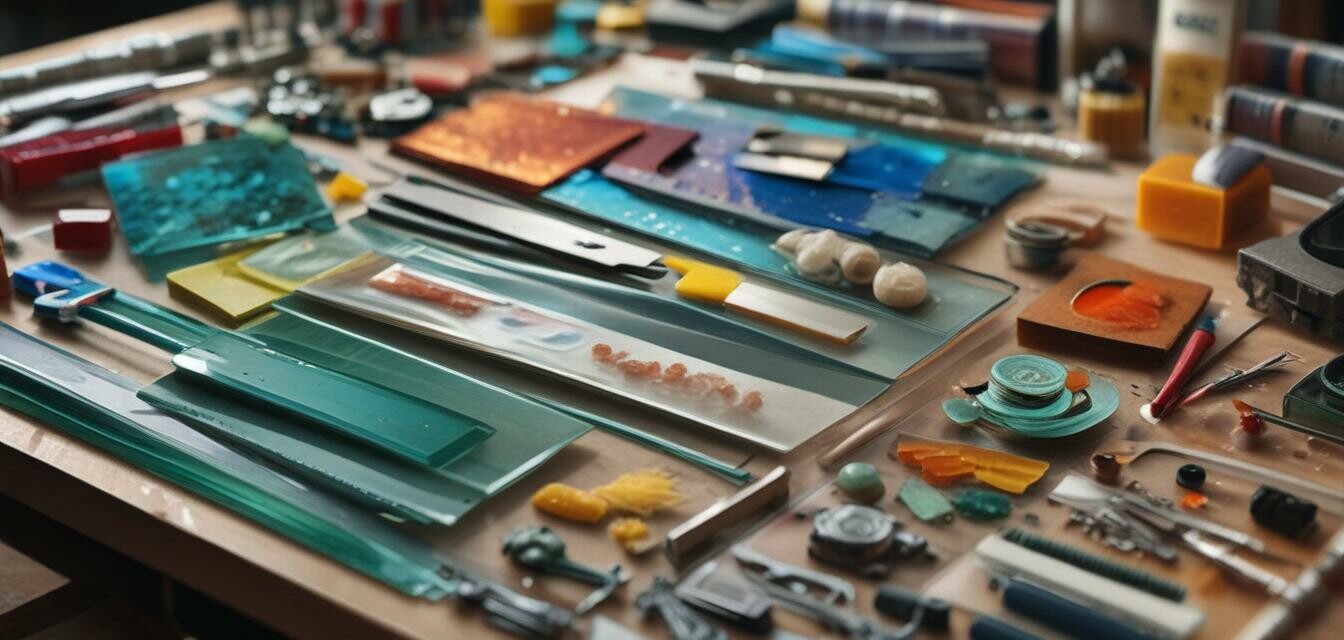
How to Choose the Right Adhesives for Glass Projects
Key Takeaways
- Understanding the types of adhesives available for glass.
- Identifying the best adhesive based on project requirements.
- Considering durability, flexibility, and drying time for optimal results.
- Following proper application techniques for a strong bond.
- Exploring accessories and tools that complement adhesive use.
When working on glass projects, selecting the right adhesives can significantly affect the durability and aesthetics of your work. Whether you're creating intricate glass art, repairing a broken piece, or making durable installations, the adhesive you choose plays a crucial role. This comprehensive guide will help you navigate through the various types of adhesives available and provide tips on how to select the best one for your specific needs.
Exploring Types of Adhesives for Glass
There are several types of adhesives suitable for glass projects, each with unique properties. Here's a breakdown of the most commonly used types:
| Adhesive Type | Description | Best Use Case |
|---|---|---|
| Epoxy | A two-part adhesive that creates a strong bond | For structural applications and repairs |
| Silicone Sealant | Flexible and waterproof, great for gaps | Sealing edges and joints |
| Cyanoacrylate (Super Glue) | Quick-drying and strong for small repairs | For precise applications and minor fixes |
| Methyl Methacrylate | Two-component system, ideal for clear bonding | For projects requiring transparency |
| Polyurethane Adhesive | Water-resistant, good for outdoor projects | For bonded glass exposed to the elements |
Factors to Consider When Choosing Adhesives
Choosing the right adhesive requires careful consideration of several factors:
- Project Type: Consider what you are creating or repairing. Different applications may require specific adhesives.
- Durability: For pieces that will be exposed to stress or environmental conditions, select adhesives with higher durability.
- Flexibility: If your glass piece is subject to movement, a flexible adhesive may be beneficial.
- Drying Time: Some projects may require fast-drying adhesives, whereas others can accommodate slower-curing options.
- Clear Clarity: If aesthetics are paramount, consider adhesives that dry clear for a seamless look.
Application Techniques for Strong Bonds
Once you've selected your adhesive, applying it correctly is crucial for achieving a strong bond. Here are some tips:
- Clean the Surface: Ensure that the glass is clean and free from dust or grease.
- Read Instructions: Follow the manufacturer’s guidelines for the specific adhesive you are using.
- Apply Evenly: Use the appropriate applicator to spread the adhesive evenly across the surfaces to be bonded.
- Secure the Pieces: Clamp or hold the pieces in place until the adhesive cures completely.
- Test the Bond: Once cured, gently test the bond strength before putting the item into use.
Complementary Tools and Accessories
In addition to adhesives, having the right tools can enhance your glass projects. Here are some essential tools you might need:
- Craft knife for precise cutting
- Sandblaster for preparing surfaces
- Safety gloves for protection during handling
- Clamps or weights for securing pieces
Explore our range of kiln accessories and tools to complement your adhesive projects. Having the right equipment ensures better results and a smoother crafting process.
Conclusion
Choosing the right adhesives for your glass projects can greatly impact the quality and longevity of your creations. By understanding the types of adhesives and considering factors such as project type, durability, and application techniques, you can achieve stunning results. Always remember to follow manufacturer's guidelines and utilize the right tools to make your crafting experience enjoyable and rewarding.
Beginner's Tips
- Start with simpler projects to get familiar with different adhesives.
- Experiment with small samples before proceeding with larger pieces.
- Join online forums and communities for additional advice and support.
- Don't hesitate to ask for help from experienced artists during your projects.
Pros
- Diverse options for different project needs
- High durability and long-lasting bonds
- Ability to create intricate designs with clear adhesives
Cons
- Some adhesives may require specific temperature conditions
- Certain types can be difficult to work with for beginners
- Not all adhesives are suitable for outdoor use

